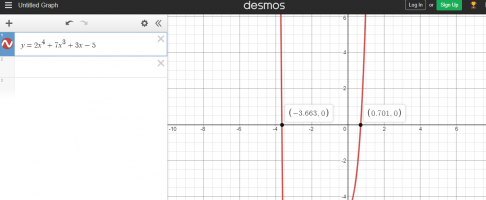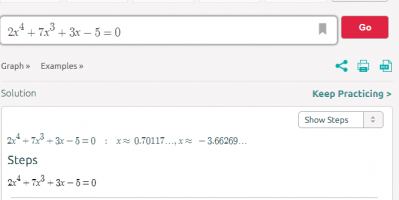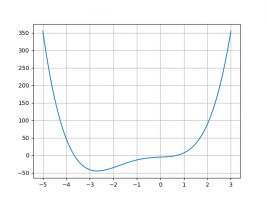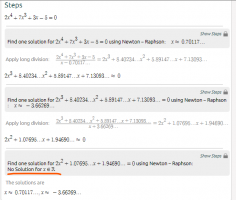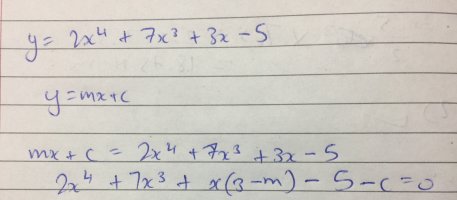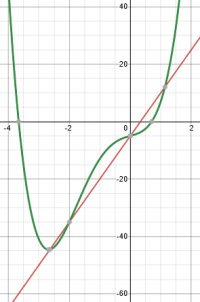We are learning quadratic equations and expressions, and this question was given in an assignment.

[-7/8 is the given answer]
This is my answer.
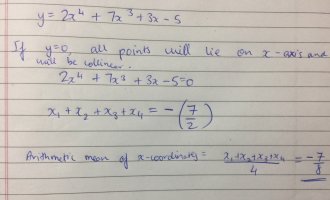
My doubts about this are:
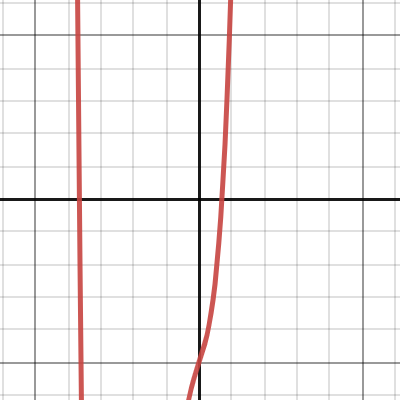
 www.desmos.com
www.desmos.com
Why does this happen?
Also, is it necessary that there should be a line that intercepts the curve [math]y=2x^4+7x^3+3x-5[/math] at four distinct points .Can you please give an example?
Or is there something wrong with my solution?

[-7/8 is the given answer]
This is my answer.

My doubts about this are:
- This answer should be valid for the points intercepted by any line of the form y=c. However, will the arithmetic mean of the x-coordinates still be -7/8 still be if we consider a the points intercepted by a line that is not parallel to the x-axis.?
- Is the answer actually -7/8?
To get an answer to 1, I entered the equation in Desmos, and this was shown.
There were only two points that actually lied on the x-axis.

Desmos | Graphing Calculator
And the mean of the x-coordinates was not equal to -7/8.
Moreover, if we look at the equation [math]2x^4+7x^3+3x-5=0[/math], then the sum of the roots must be [math]-7/2 = -3.5[/math]
But after finding the solutions to the equations from Symbolab, they did not add up to -3.5. Since a quartic equation should have 4 roots, I found out what the sum would be in case two of the roots were 0.701 and also other variations, but the sum still did not add up to -3.5. There are no complex roots to this equation either.Why does this happen?
Also, is it necessary that there should be a line that intercepts the curve [math]y=2x^4+7x^3+3x-5[/math] at four distinct points .Can you please give an example?
Or is there something wrong with my solution?

